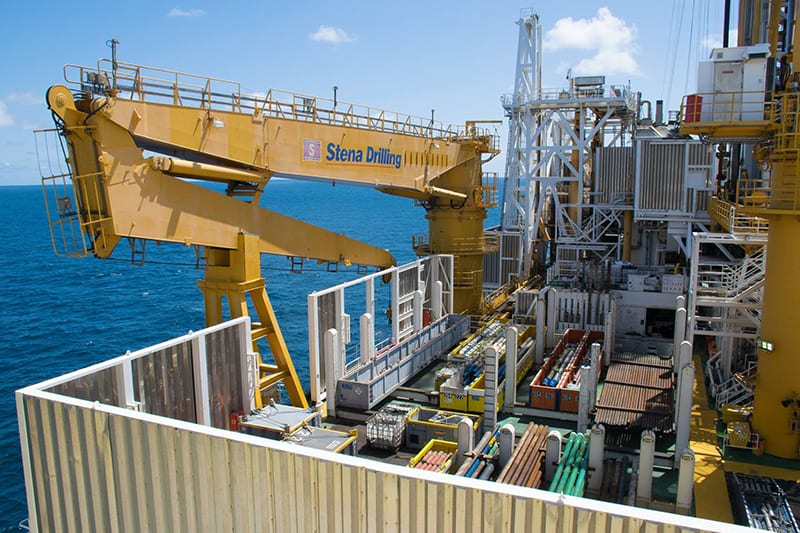US oil major ExxonMobil is rapidly developing vast oil reserves discovered off the Guyana coast in what analysts say are ideal conditions for a solid return on investment that will result in massive revenue for the company and its partners as well as the county of 750,000 people.
ExxonMobil has made nine discoveries in the Stabroek Block offshore Guyana with estimated recoverable resources at over 4 billion barrels of oil equivalent while Tullow Oil’s offshore Orinduik block potentially holds 3 billion boe.
And there is more to come says S&P Global Platts, in a recent report. Exxon’s latest discovery, Hammerhead, has yet to be factored into the estimate and, according to several sources, this could put the Stabroek block’s resources closer to 5 million boe. Tullow is expected to spud its first well on the Orinduik block in late 2019. Tullow operates the block with a 60% stake and Eco Atlantic holds a 40% interest.
“Guyana is the jewel in the crown, the mother of dragons. That is the hottest exploration area in the world. It’s no longer frontier, it’s a sub-mature basin,” Eco Atlantic CEO Gil Holzman told S&P Global Platts in October.
“This is phenomenal, over 4 billion barrels of pure, sweet, high grade API oil, which the refining itself is much easier than say neighboring Venezuela [which produces heavier sourer crude], in a place that is easy to operate. It’s a paradise for exploring in that sense,” he added.
Further highlighting the quality of the Guyana crude, ExxonMobil Country Manager, Rod Henson told OilNOW the country was blessed to have one of the better-quality crudes.
“Guyana is blessed with a relatively light crude. It is not considered a heavy oil. What that means is that heavier oils need more refining. Typically the price that you get for heavier oils is lower – there is some sort of a deduct or penalty you get for having heavier crude. So in general, the Guyana crude is a lighter, sweet crude,” he pointed out.
Analysts Wood Mackenzie’s latest research also sounded an upbeat tone, noting the production ramp-up would be faster than anything ever achieved in a complex of giant fields in frontier deep water.
“The [Guyana] basin as a whole may hold another 8-10 billion boe of reserves…This would take the total to three times what’s been found so far in Guyana’s Stabroek block,” WoodMac said.
“We expect around 50 exploration wells to be drilled over the next five years. Guyana itself might be headed for over 1 million b/d of production if exploration succeeds in converting YTFs [yet to finds]; the broader basin higher still if the plays extend into Suriname and French Guiana.”
S&P Global Platts said this was a view shared by Holzman who said he sees Guyana joining the world’s top 10 oil producers in just a matter of years.
Platts Analytics also said it is confident on production targets but with reservations. “From a resource point of view, we understand the reservoir conditions are very favorable to producing oil at commercial rates (e.g. thick reservoirs, good permeability, light oil).
In addition, “we understand that the breakevens for development are very favorable (around $40/b),” said Platts Analytics’ Rene Santos. That could mean Guyanese oil competing with a glut of shale from the neighboring US given their close proximities in terms of crude quality and geographies.
“There are obviously risks and challenges due to producing oil for the first time (lack of infrastructure), but everything seems to be progressing well so far and the use of FPSOs requires less infrastructure (versus multiple platforms or pipelines),” Santos said.
Platts Analytics doesn’t see any major risks but said the border dispute with Venezuela could flare up at any point even though it has gone very quiet. It also highlighted presidential elections in 2020 given the fact the IMF has been critical of the deal ExxonMobil received.
WoodMac also played down the impact Guyana would have on the oil market, saying it doesn’t compare in magnitude to the shale oil being produced from the Permian basin in the US. But in reality there appear few serious challenges.
“Perhaps the biggest lesson from Guyana is that it shows the way forward for conventional explorers emerging from the downturn looking for growth opportunities,” WoodMac said. “There are new plays out there, giant oil discoveries waiting to be unearthed and which can compete on full cycle economics.”
It would appear that with every new find, the cautiously optimistic mood from analysts is being replaced with that of Guyanese oil gushers, Platts pointed out.



